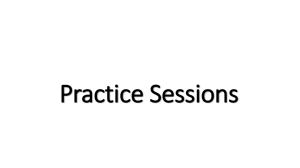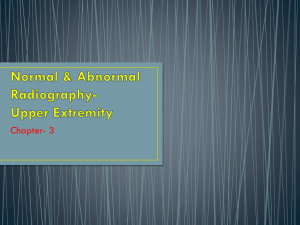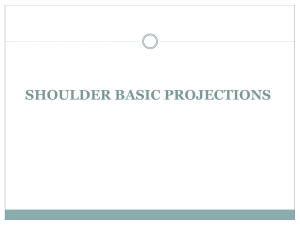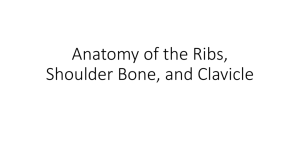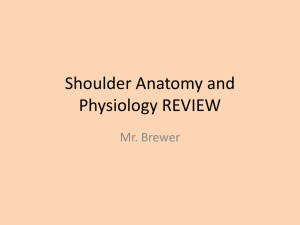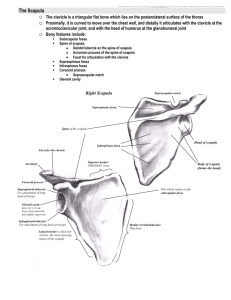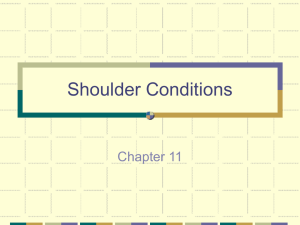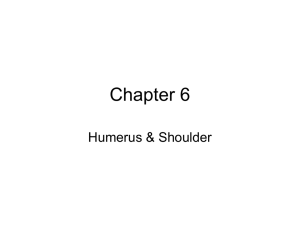Bones of the Shoulder Girdle
advertisement
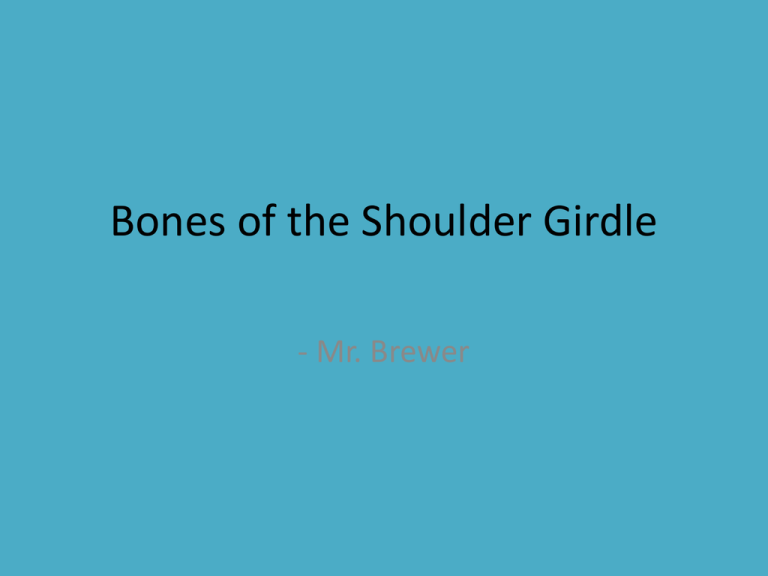
Bones of the Shoulder Girdle - Mr. Brewer Bones of the Shoulder • 4 Major Bones that make up the Shoulder Girdle: – Humerus (Upper Arm Bone) – Clavical (Aka the “collar bone”) – Scapula (Aka the “Shoulder Blade”) – Sternum (Aka the “Breast Plate”) https://www.youtube.com/watch?v=D3GV KjeY1FM Humerus • The Humerus is the upper arm bone. • Important boney landmarks: – Head of the Humerus – Greater Tubercle – Lesser Tubercle – Bicipital Groove – Olecranon Fossa – Lateral AND Medial epicondyles Clavicle Clavicle: - The Clavicle is “S” in shape. - It extends from the Sternum in the middle of the chest, to the acromion of the Scapula. - The Clavicle is most vulnerable for fractures right in the middle 1/3 where the bone bends. - Due to the fact that the clavicle is very “superficial”, there will be a higher chance of fractures due to a direct blow to the region. Scapula Scapula: - The role of the scapula is to provide protection from the dorsal aspect of the body to some internal organs, while allowing a wide range of movement ability at the shoulder joint. - Important landmarks of the Scapula: - Glenoid Fossa (Cavity) Coracoid Process Acromion Process Spine of the Scapula Inferior Angle Scapula • The Coracoid Process: – The Coracoid process protrudes anteriorly from the subscapular surface. – It is the origination of the Short Head of the Biceps tendon. • The Acromion: – The Acromion is formed at the lateral tip of the scapula. – It is the point where the Clavicle connects to the scapula and forms the shoulder girdle. Scapula – Glenoid • Glenoid Fossa: – The Glenoid Fossa is a flat surface of the scapula where the humeral head comes together to form the Glenohumeral, aka the “Shoulder Joint”. – The Glenoid Labrum: • The Labrum of the shoulder is much like the labrum of the Hip. • It covers the peripheral edge of the glenoid, and acts as a cushion for the humeral head, while providing additional stability to the shoulder because of it’s “concave” nature. • This Cushion reduces bone-to-bone contact, and absorbs shock when the humerus is forced into the shoulder. • Attached to the Labrum at the most superior aspect is the Long Head of the Biceps. Sternum The Sternum is broken into 3 major parts: 1. Manubrium - Suprasternal Notch: AKA the Jugular Notch - Clavicular Notch: Where the clavicle inserts into the sternum. 2. Body - The body of the Sternum has several notches or Costal Facets that act as insertion points for the cartilage that connects the ribs in the front. 3. Xiphoid Process - The xiphoid process is similar to the “coccyx” of the tail bone. - It acts as an extension with no major role or function, but can be injured or fractured with a direct blow to the area. - Sometimes that can happen during CPR. Joints • Joints are created when two or more bones articulate with each other. • There are 4 Major Joints of the Shoudler: – Sternoclavicular (SC) Joint • Where the Clavicle meets the Sternum at the Manubrium. – Acromioclavicular (AC) Joint • Where the Clavicle meets the Scapula at the Acromion Process. • This is where a Shoulder sprain or “separated shoulder” injury can occur. – The Scapulothoracic Joint • This is a “false” joint. • The Scapula and thoracic area (Rib Cage) do not actually articulate, but because the Scapula glides around the rib cage it is considered to be a joint. – Glenohumeral (GH) Joint • AKA the “Shoulder Joint” • Where the Head of the Humerus inserts into the Glenoid Fossa of the Scapula. Joints of the Shoulder Ligaments The Ligaments of the Shoulder Complex: - The ligaments of the shoulder need to be strong for structure support, but flexible enough to allow for a variety of movements through a wide range of motion. - A sprain or tear of the Acromio-Clavicular Ligament can result in a “separated shoulder”. (AKA an AC sprain) Bursa • There are 4 Major Bursa of the shoulder joint. (Picture is missing the subscapular bursa) – They all act as friction reducers for tendons that cross through the shoulder joint. – Although helpful in that regard, the bursa sacs can be inflamed and cause pain in the shoulder via repeated use and/or over use of the shoulder.

